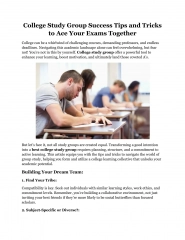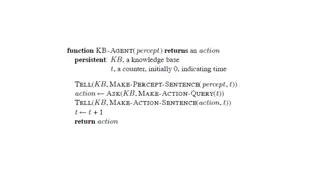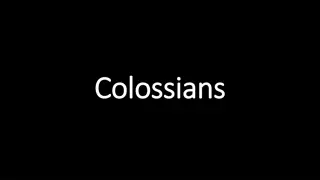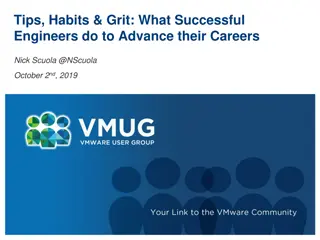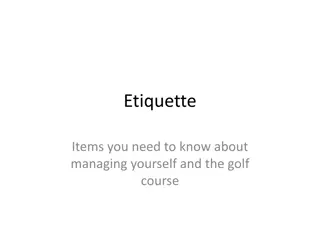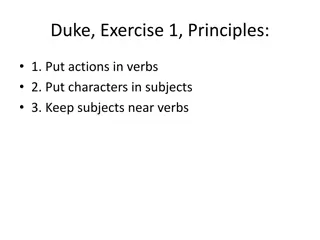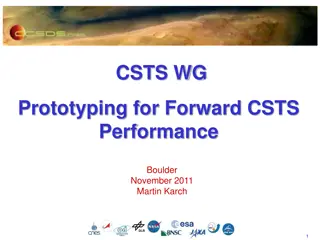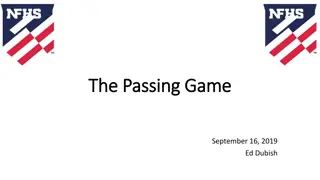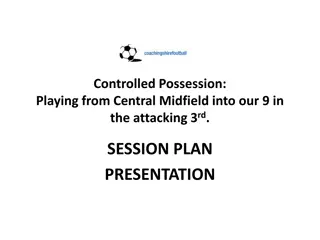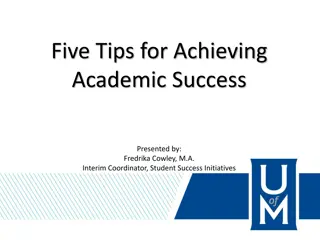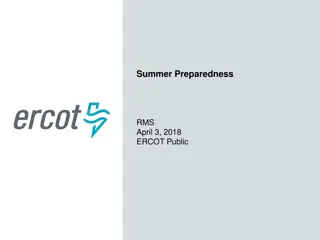Putting Your Best Forward: Presentation Tips for Success
In this comprehensive guide, learn essential strategies for creating effective presentations. Understand the importance of knowing your audience, preparing your slides, delivering a compelling talk, and avoiding common pitfalls in technical presentations. Discover the significance of storytelling, practice, and rehearsal in enhancing your presentation skills. Elevate your presentations to the next level with these valuable tips and insights.
Download Presentation

Please find below an Image/Link to download the presentation.
The content on the website is provided AS IS for your information and personal use only. It may not be sold, licensed, or shared on other websites without obtaining consent from the author.If you encounter any issues during the download, it is possible that the publisher has removed the file from their server.
You are allowed to download the files provided on this website for personal or commercial use, subject to the condition that they are used lawfully. All files are the property of their respective owners.
The content on the website is provided AS IS for your information and personal use only. It may not be sold, licensed, or shared on other websites without obtaining consent from the author.
E N D
Presentation Transcript
Putting your best .pptx forward Thomas E. Murphy Institute for Research in Electronics & Applied Physics Dept. of Electrical & Computer Engineering University of Maryland Future Faculty Program Seminar
Know your Audience To whom are giving this presentation? Examples: scientific colleagues, high-school students, potential employers, venture capitalists, IREAP graduate students Hint: look at the conference program to find out who else will be speaking in your session. What do you want them to learn? What background/knowledge do they already have? 2
Preparing your Presentation Plan for about 1 slide per minute Don t put in more slides than necessary Whether you like it or not, learn to use PowerPoint (it is now standard) 3-7 bullets per page Keep formatting consistent across slides It is neither necessary, nor advisable to use full sentences in your bullet points. And do not read your slides directly. Check speeling 3
Anotomy of an Effective Presentation Introduction: Say what you are going to say Talk: Then say it Conclusion: Then say what you said Avoid dramatic, surprise endings, etc. 4
Telling a Story Every slide should make one (and only one) point Organize your slides logically to tell a cohesive story, from start to finish 5
Cardinal Sins (for Technical Talks) Talking for too long (exceeding your allowed time) Text-heavy slides Equation-laden slides (even worse than text) Losing your audience Reading your slides Failure to cite sources and related work 6
Practice & Rehearse Practice your talk out loud Have a friend or colleague listen Time yourself Videotape yourself ...but don t over-rehearse First rehearsal makes a BIG difference Second rehearsal adds further improvement After three, things start getting worse Do not memorize your talk! Look for opportunities to give talks 7
Body Language and Etiquette Dress appropriately it shows respect for your audience (Nobody will remember that you were the only one wearing a tie, but folks will be talking about the sleeveless Metallica T-shirt for months.) Steve Jobs never stood behind a podium Make eye contact engage your audience Keep your head up, and speak clearly Vary your pitch Show enthusiasm (but don t force it be yourself) 8
Figures, Charts Raw, unprocessed Matlab plots are easily spotted and often poorly formatted MS Excel is especially ill-suited for scientific data Become proficient with a good scientific plotting program (Origin, etc.), and a good graphic editing program (Illustrator, Photoshop) Figures from print manuscripts usually need to be reformatted for presentation 9
Color Use color effectively to convey meaning, but do not overuse 7-10% of males have red-green color vision deficiency This is unreadable So is this This is an assault on the retina 10
Fonts Never smaller than 18 point AVOID EXCESSIVE USE OF ALL CAPS, EXCEPT IN TITLES (ALL CAPS is the text equivalent of YELLING) Avoid silly fonts (you want to be taken seriously, right?) Sans-serif fonts (Arial, etc) are easier to read 11
Animations Can be useful or distracting, depending on how they are used Animations can make it impossible to quickly page through your slides Overlays and zoom animations make it hard to produce a meaningful hardcopy Fancy slide transitions can be especially clich d and distracting 12
Preparation Before the Talk Arrive early to venue Ask about available AV equipment in advance Bring your own power cord Bring your own laptop but always keep backup slides on flashdrive and also on a publicly accessible webpage and have a PDF copy also available Clean off your desktop Disable screensaver and other background apps Close your browser & Email client 13
Common Problems (& solutions) Embedded videos do not show make sure your embedded videos do not require internet access keep auxiliary video files in the same directory as your presentation. Do not move or rename! test everything in advance before your talk VGA / DVI / HDMI incompatibility 15-pin VGA cables remain the most prevalent connection mechanism bring your own adapter if your computer doesn t have 15-pin VGA Adjust your screen resolution to 1024x768 Missing fonts (especially equations!) Avoid non-standard fonts where possible For complex equations, consider converting to PNG/GIF Have a PDF backup available 14
Delivery Use a laser pointer, but use it sparingly green is easier to see than red avoid waving, gesturing, or other distracting movements (this is not a laser light show) avoid pointing into the audience (esp. with green) don t use if you are far away from screen (use mouse instead) USB remote Slide Advancer Microphone only if necessary 15
Handling Questions DURING YOUR TALK Respond politely, but concisely Don t spend time answering a question that will be covered later Invite the individual to ask again if you haven t answered the question by the end AFTER YOUR TALK Repeat/rephrase the question (not everyone heard!) Request clarification if necessary Pause to think, if necessary, before responding Answer directly, to the best of your ability Be honest if you don t know the answer. Do not speculate, equivocate, or condescend Try not be defensive 16
Handling Potentially Difficult, Annoying, or Confrontational Questions Are you aware of the work of [me, or my colleague/associate] from [several years ago]? We try to stay informed about all of the related research in this area thank you for pointing out one that may have escaped out attention. Have you considered [something you obviously did not consider]? That is an excellent suggestion, and something that we will likely study/take up in the future. I have two questions and a comment, the first of which has 2 parts. Let me start by... Let me try to answer your first question, and since I see many other hands raised, perhaps we can discuss the longer issues in the break... 17
Handling Difficult, Annoying, or Confrontational Questions, cont. Assume the best - most people are not out to get you Listen to the person, and don t interrupt, but direct your answer to the entire audience Don t end with does that answer your question? Proceed immediately to the next question 18
Concluding Remarks It is OK to be nervous It is not OK to be unprepared It is better to run out of slides than to run out of time Present only what the audience needs to know, not what would be nice to know Prepare, but don t memorize 19


